The Nam Ou River Cascade Hydropower Project: Epitome of China-Laos Friendship
by Ma Liwenbo, Liu Xiangchen & [Laos] Souksanith SISOULATH
The seven hydropower dams on the Nam Ou River in northern Laos can be likened to a string of seven dazzling pearls, which have brought vitality to the once silent mountain valley.
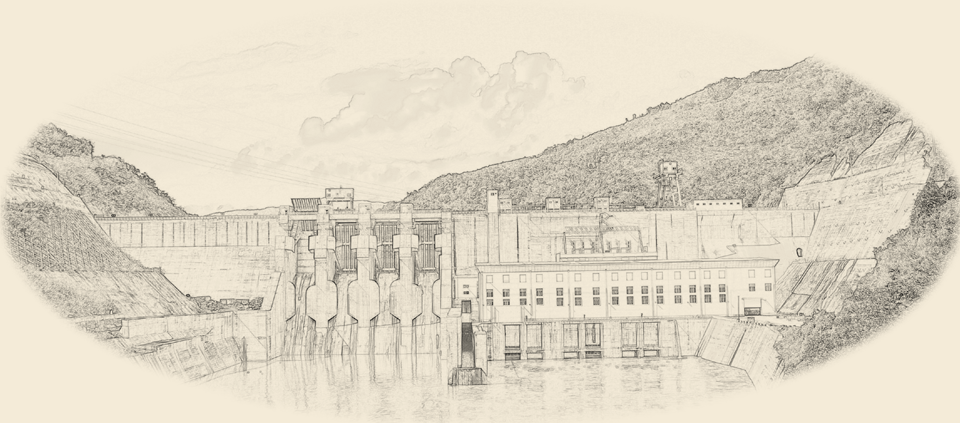
The Nam Ou River cascade hydropower project was undertaken with the vision of ensuring stable power supply in Laos and building it into the "battery of Southeast Asia". It is a customized hydropower project to protect and improve the local ecology.
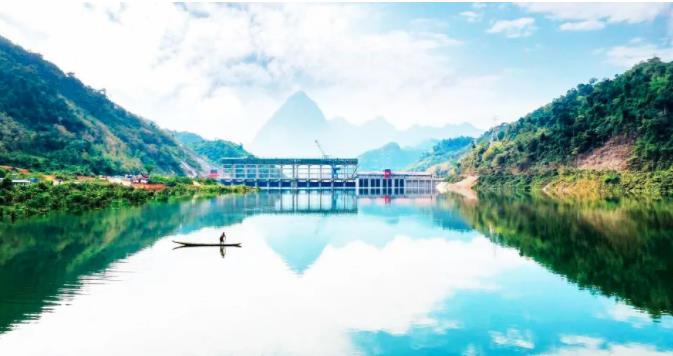
The picturesque view of the Nam Ou River with dams on it
A Customized Hydropower Station
The Nam Ou, the largest tributary of the Mekong River in Laos, originates from the China-Laos border area, and flows southward across the Phôngsali, Oudomxay and Louangphrabang provinces in Laos before falling into the Mekong.
Along the banks of the river stand hills covered with dense subtropical forest, shrouded in mist all year round. The few villages on the hills followed a traditional lifestyle with fishing, farming and spinning being the main occupations.
In the dry season, Laos, though rich in hydropower resources, suffered severe power shortage. Some rural and mountain areas did not have electricity throughout the year. It was a major reason behind the poverty and underdevelopment. At night, the villages along the bank of the Nam Ou remained shrouded in darkness.
The villagers began work at sunrise and called it a day at sunset. Some villages used mini generators at night for tourists. The street lamps, when they worked, gave a dim light but often, they broke down because of electrical power failure, plunging the whole village into darkness again.
Many villages in Phôngsali were cut off from the outside world due to lack of roads. Villagers had to go to the neighboring provinces by boat to buy daily necessities, which was dangerous during the rainy season. The underdeveloped transport infrastructure was another factor hindering the area's development.
How could these villages be lit up? The Nam Ou River held the key to that.
The river flows through mountainous areas for 475 kilometers and has a 25,600-square-meter drainage area. Due to its steep riverbed slopes and zigzag course through mountain gorges, the Nam Ou is ideal for hydropower development. In the past, the Lao Government highly recommended it to interested developers.

The Nam Ou River hydropower station at night
Since the 1990s, the river was eyed by companies from several countries. But most of them wanted to build a high dam and a huge reservoir, which would mean large-scale inundation, resettlement and environmental damage. Consequently, their plans were rejected by the government.
Then Power Construction Corporation of China (PowerChina) proposed a seven-dam cascade plan based on the actual conditions of the river. According to the plan, the seven dams would have lowest possible heights and the first four dams generate electricity based on natural water flow rather than impoundage. It would reduce the area that would be inundated by half and offer greater protection of the ecosystem around the river.
The plan won the approval of the government and Laotian civil society because of its most effective hydropower utilization, greatest social benefits, and minimum possible impact on the environment, relocation and loss of arable and forest land due to inundation.
After a 29-year concession period, which will begin once all the facilities start commercial operation, the completed project will be handed over to Laos' state-run electricity corporation. It will upgrade the power grid structure and transmission in northern Laos.
The once dark villages now have electricity around the clock, looking like a brand new world. At night light shines out of the windows of every household, and villagers can watch TV at home, and store fish in their freezers. They have switched to business from farming and the village fair has become a bustling market.
Every holiday inn in the village now sports a board saying "Electricity & WIFI" in English to attract business.
This is undoubtedly the most effective advertisement.
Falling in Love with a New Village
Less than 100 meters upstream of the Nam Ou 3 dam is a new village for relocated residents. At the entrance to the village, its name, Akamu, is inscribed on a stone tablet in both Chinese and Lao.
When the new village was ready, Khmu and other villagers, relieved to start a new chapter in their lives, erected the tablet.
Khmu's new house is made of reinforced concrete. It is spacious and equipped with the necessary home appliances available locally. "Living in such a house makes me smile even when I am sleeping," he said.
The materials used to build the house are beyond his expectations. The steel used for the roof truss and the moisture-proof stone for the ceiling are the best brands available locally. The houses were built for the villagers free by PowerChina.
In addition, PowerChina gave every relocated family vegetable seeds and brought agricultural technicians to show them the best way to grow the vegetables. Khmu's family grows enough vegetables to eat themselves as well as sell at the market, which fetches good money.
According to Khmu, besides 71 houses, the new village has a village office, a clinic, a school and a temple. Its road, water supply, drainage, sewage and electricity supply are as good as those in cities.
In their old village, the villagers used to set off for the Muang Ngoi market by boat as early as 5 a.m. and return home around 3 p.m. But the new village is connected to the Nam Bak and Muang Ngoi districts by a paved road, which goes right up to the No. 13 highway, the north-south artery of the country. The villagers can now ride to these counties on motorcycle and shop there as late as they want. The journey takes about two hours.
Khmu plans to trade in his motorcycle for a van. "I'd like to make the best use of this road," he said. "With a new van, I can get local products such as bamboo shoots, papayas, coffee beans, bananas and jackfruits from neighboring villages and sell them in Louangphrabang."
Within seven years, about 30 more new villages were built along the Nam Ou, relocating nearly 2,300 households, which meant over 126,000 people. The location and living allowance scheme of each village were discussed by the migration commission, the villagers and PowerChina.
When 11-year-old Lulani's family relocated to one of the new villages, she was both curious and excited. From a shanty they moved into a new, spacious house, and on top of that, the new village had smooth and clean streets, much better than the lanes in the old village, which became muddy in the rainy season and dusty in the dry season.
But what surprised her most was the new school built by PowerChina. Though a newcomer, she fit in instantly as she saw her old classmates playing in the spacious playground, and embraced her new life together with them.
The banks of the Nam Ou are today filled with the sound of children reading in unison in their classrooms and music as Lulani and her classmates dance their traditional dance in their physical education class.
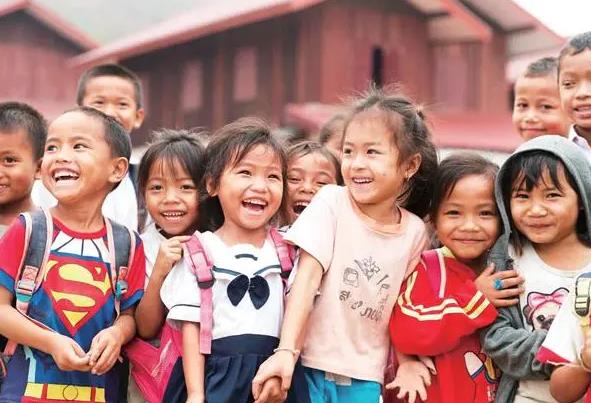
The smiling students at the new school
The scenery at the new village is beautiful and everyone is in smiles. At night, villagers sang and danced together to celebrate their relocation, with the aroma of stewed chicken and fried fish filling the air.
The Chinese project workers and villagers exchanged toasts and danced the traditional dance in step with drum beats.
Wuhan, We Are with You
In 2018, Liliha was among the second batch of Laotian students selected to study at the School of Water Resources and Hydropower Engineering of Wuhan University in central China.
Liliha could not have imagined that she, a student from Pak Ou District in Louangphrabang, would be chosen to study in the prestigious Wuhan University. "I will work hard to repay my country and be worthy of the help I received," she said. It was also the sentiment of the other students in the batch.
The students' association with Wuhan and China grew out of an education initiative for the local people launched after the completion of the Nam Ou River cascade hydropower project.
PowerChina decided to sponsor within a four-year timeframe 18 students from Laos to pursue their bachelor's degree in Wuhan University, and have achieved the goal by far. Due to Covid-19, PowerChina helps this year's students to study online from Vientiane.
Early in 2020, during their winter vacation, Liliha and five more international students from Laos, Kale, Kaloni, Analu, Havika and Meka, decided to stay on in Wuhan to learn Chinese instead of going home.
When Covid-19 broke out in Wuhan, the Laotian students, who had bonded with the warm and friendly city within one semester, chose to stay in Wuhan and fight the epidemic together with the city.
Their school offered to provide them with meals and Power-China gave them their allowances in advance. The presence of the school faculty and the thoughtful arrangement by PowerChina gave them reassurance.
They had a tight schedule at the school during the period of lockdown. "We attended online class for courses like engineering economy, hydraulics and structural mechanics," Analu said. In his leisure time, he played the guitar, his favorite musical instrument.
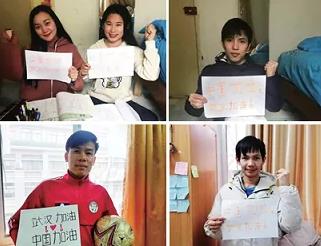
The students from Laos show messages of solidarity in Chinese, saying, "Keep fighting, Wuhan"
"Wuhan is a heroic city. Wuhan University has one of the most beautiful campuses in China. We have climbed the Yellow Crane Tower and enjoyed hot dry noodles here. We have shared the joyous moments, and now we are willing to stand by you in your difficulty," Kale wrote in his diary.
Havika said, "I was moved and inspired by the optimistic and positive attitude I saw with medics and volunteers from all corners of the country coming to serve in Wuhan."
Kale said, "The Nam Ou River power plant helped to change life in our hometown. We are lucky to be sponsored by PowerChina to further our studies in Wuhan. We empathize with Wuhan residents and want to reach out to help at the outbreak of Covid-19."
The students told their parents via WeChat that they were safe in Wuhan. "China's anti-epidemic measures are strong. The campus is safe and we are under good care in Wuhan."
The students have a WeChat group. Through that, those who had gone back to Laos encouraged the six remaining in China. What they said most often was "Wuhan, we are there for you."
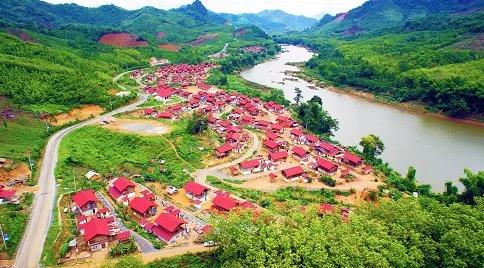
A new village for relocated residents
During the fight against Covid-19, the Laotian students stood by China. In the same way, PowerChina also stood by Laotians. In April 2020, responding to a call by the Chinese Consulate in Louangphrabang, the Nam Ou River hydropower project team donated medical supplies for local medical institutions.
Just as distance shows a horse's strength, time reveals a person's sincerity. The friendship between China and Laos, two good neighbors for generations, has prevailed, in both good times and bad.
FOR MORE
Project Overview:
The Nam Ou River cascade hydropower project, being developed in two phases, has a total installed capacity of 1.27 million kilowatts, an average annual generation capacity of about 5 billion kilowatt-hours, and a total investment of USD2.73 billion. By far the installed capacity has reached 0.88 million kilowatts.
The first phase comprising the Nam Ou 2, 5 and 6 plants has a total installed capacity of 540 megawatts with a total investment of USD1.04 billion. The first phase construction started in October 2012, with the river closure completed by the end of 2013. It began generating electricity in November 2015, put all generating units into operation in April 2016, and started commercial operation in January 2017. By September 2020, the first phase had provided Laos with 5.4 billion kilowatt-hours of electricity.
The total installed capacity of the second phase, comprising the Nam Ou 1, 3, 4 and 7 plants, is 732 megawatts with a total investment of USD1.7 billion. It started construction in April 2016 with the river course closed by the end of 2017. It began electricity generation in December 2019 and is expected to be completed by 2021. By far, seven units have been put into operation, generating accumulative power of 300 million kilowatt-hours.


